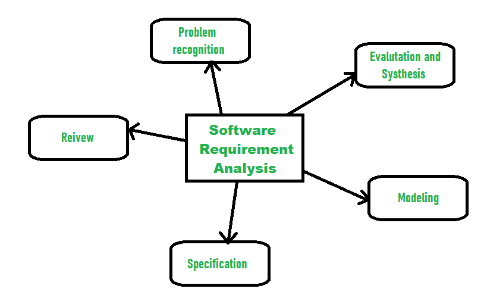
- Definition and Purpose
- Types of Requirements
- Requirement Gathering Techniques
- Identification
- Requirement Documentation
- Validating and Verifying Requirements
- Tools for Requirement Analysis
- Conclusion
Definition and Purpose
Requirement analysis, also known as requirements engineering, is a crucial phase in the software development lifecycle focused on identifying, documenting, and managing the requirements of a software or system project. Its main goal is to ensure that all stakeholders including users, clients, and development teams share a clear and common understanding of what the system is expected to accomplish. This clarity helps eliminate ambiguity and sets a strong foundation for all subsequent stages of development. Through requirement analysis, teams aim to thoroughly understand the needs and expectations of users and stakeholders, capturing them in a detailed and structured manner. The process involves defining requirements that are clear, concise, and testable, ensuring that they can be effectively validated during testing to confirm that the system meets its objectives. Another important purpose of requirement analysis is to facilitate smooth communication and collaboration between various project participants, reducing misunderstandings and aligning goals, which is emphasized in Web Designing Training. This phase also establishes a baseline that guides the design, development, and testing activities, making sure that every team member works toward a unified vision. Since errors or omissions in requirement analysis can cause costly delays, rework, or even project failure, this step demands thorough attention and accuracy. By investing time and effort early in requirement analysis, teams can significantly improve the likelihood of delivering a successful product that satisfies stakeholder needs, meets quality standards, and adheres to schedule and budget constraints. Overall, requirement analysis is a foundational activity that plays a vital role in driving the success of software projects.
Would You Like to Know More About Web Developer? Sign Up For Our Web Developer Courses Now!
Types of Requirements
In software engineering, understanding the different types of requirements is essential for building a system that meets user needs and business goals. Requirements are generally categorized into two main types: functional and non-functional requirements. Functional requirements describe what the system should do, the specific behaviors, features, and functions it must support. These include user interactions, data processing, business rules, and system workflows. Functional requirements define tasks such as user authentication, data entry, report generation, or payment processing, providing a clear picture of the system’s expected operations. They are often captured through use cases, user stories, or detailed specifications to guide development and testing. On the other hand, non-functional requirements describe how the system performs rather than what it does. These include qualities like performance, reliability, security, scalability, usability, and maintainability. Non-functional requirements are critical for ensuring the system operates efficiently under expected conditions and meets user expectations beyond mere functionality, an important topic among the Top 10 Reasons to Learn JavaScript. For example, a non-functional requirement might specify that a website should load within three seconds or that sensitive data must be encrypted. There are also other subcategories such as business requirements, which capture high-level goals and objectives from a business perspective, and technical requirements, which address the technical constraints, platform choices, and integration needs of the system.

Clearly distinguishing between these types helps teams prioritize work, design appropriate solutions, and conduct thorough testing. Both functional and non-functional requirements are equally important for delivering a successful software product that not only performs the desired tasks but also meets quality standards and user satisfaction. Understanding and documenting these requirements comprehensively is foundational to effective software development.
Requirement Gathering Techniques
- Interviews: Conducting one-on-one or group interviews with stakeholders helps gather detailed insights about their needs, expectations, and challenges. It allows for direct communication and clarification of ambiguous requirements.
- Questionnaires and Surveys: These are structured tools used to collect information from a large group of users efficiently. They are useful for gathering quantitative data and general opinions about system features or performance.
- Workshops: Workshops bring together stakeholders, developers, and analysts to discuss requirements collaboratively. This interactive setting promotes idea sharing, consensus building, and rapid clarification of needs.
- Observation: By observing users in their natural work environment, analysts can understand real-world workflows and uncover implicit requirements that users may not explicitly state, insights valuable when comparing AngularJS Vs JQuery.
- Document Analysis: Reviewing existing documentation such as business plans, system manuals, and reports helps identify current processes and requirements, providing a baseline for new system development.
- Prototyping: Creating early prototypes or mockups allows users to interact with a preliminary version of the system, helping to clarify and refine requirements based on direct feedback.
- Use Cases and Scenarios: Describing how users will interact with the system through use cases and scenarios helps capture functional requirements and understand user goals and system behavior in different situations.
- Understanding Stakeholders: Stakeholders are individuals, groups, or organizations that have an interest in or are affected by the outcome of a project. Identifying them early ensures their needs and concerns are addressed.
- Types of Stakeholders: Stakeholders can be internal (e.g., employees, management, development team) or external (e.g., customers, suppliers, regulatory bodies). Recognizing all types helps in comprehensive engagement.
- Stakeholder Analysis: This involves listing potential stakeholders and analyzing their influence, interest, and impact on the project, a process covered in Web Designing Training.
- Techniques for Identification: Common techniques include brainstorming sessions, interviews, reviewing project documents, and consulting with experienced team members or domain experts to discover all relevant stakeholders.
- Categorizing Stakeholders: Grouping stakeholders based on their roles, level of interest, or influence helps tailor communication and involvement methods to fit each group effectively.
- Continuous Identification: Stakeholder identification is not a one-time task. As projects evolve, new stakeholders may emerge, and existing ones may change roles, requiring ongoing review and updates.
- Importance of Early Identification: Early stakeholder identification prevents missed requirements, reduces conflicts, and improves project acceptance by ensuring stakeholders’ expectations are managed from the beginning.
- Definition of Validation: Validation ensures that the requirements accurately reflect the needs and expectations of the stakeholders. It answers the question, “Are we building the right product?”
- Definition of Verification: Verification checks whether the requirements have been specified correctly and completely according to standards and project objectives. It addresses, “Are we building the product right?”
- Reviewing Requirements: A key step in both validation and verification is conducting thorough reviews of requirement documents involving stakeholders, developers, and testers to identify inconsistencies or omissions early.
- Prototyping for Validation: Creating prototypes helps stakeholders interact with a preliminary version of the system, providing practical feedback that validates if the requirements meet real user needs, a process that contrasts with automation workflows in What is UIPath.
- Test Case Development: Verification includes developing test cases that correspond to each requirement, ensuring that the requirements are testable and can be objectively validated during quality assurance.
- Traceability: Maintaining traceability links between requirements, design, implementation, and testing helps verify that all requirements are addressed and correctly implemented throughout the development lifecycle.
- Managing Changes: Validation and verification are ongoing processes that must accommodate changes in requirements due to evolving business needs, ensuring the final product remains aligned with stakeholder expectations.
Interested in Obtaining Your Web Developer Certificate? View The Web Developer Courses Offered By ACTE Right Now!
Stakeholder Identification

Requirement Documentation
Requirement documentation is a critical part of the software development process that involves systematically recording all the gathered requirements in a clear, detailed, and organized manner. This documentation serves as a formal agreement between stakeholders and the development team, ensuring everyone shares a common understanding of what the software must achieve. Well-prepared requirement documents outline both functional requirements, which describe specific behaviors and features of the system, and non-functional requirements, such as performance, security, usability, and scalability. Clear and precise documentation helps prevent ambiguity, reducing misunderstandings and the risk of scope creep during development. Effective requirement documentation typically follows standardized formats, such as Software Requirement Specifications (SRS), which provide a comprehensive description of the software system’s expected capabilities, constraints, and interfaces. It often includes use cases, user stories, diagrams, and acceptance criteria to support better communication and validation, key topics in How to Become an Angular Developer. Additionally, good documentation supports traceability, allowing teams to track requirements throughout the project lifecycle from design and development to testing and maintenance. This traceability ensures that all requirements are addressed and facilitates impact analysis when changes are necessary. Creating quality requirement documentation involves collaboration between business analysts, developers, testers, and stakeholders, often iterating based on feedback to enhance clarity and completeness. As projects evolve, maintaining and updating the documentation is essential to keep it relevant and useful. In agile environments, documentation tends to be more lightweight and flexible, focusing on user stories and backlog items, but still serving the vital purpose of capturing and communicating needs. Ultimately, requirement documentation is foundational to project success, enabling efficient planning, development, testing, and delivery of software that meets stakeholder expectations.
To Explore Web Developer in Depth, Check Out Our Comprehensive Web Developer Courses To Gain Insights From Our Experts!
Validating and Verifying Requirements
Tools for Requirement Analysis
Requirement analysis tools play a vital role in helping teams gather, organize, and manage software requirements efficiently throughout the development process. These tools facilitate communication between stakeholders, improve documentation accuracy, and help ensure that all requirements are captured and tracked from inception to delivery. Common features of requirement analysis tools include requirement elicitation support, version control, traceability, collaboration capabilities, and integration with other project management or development tools. Popular tools for requirement analysis include JIRA, which offers customizable workflows and issue tracking, enabling teams to document and prioritize requirements alongside development tasks. Confluence, often used with JIRA, provides a collaborative space to create and share detailed requirement documents. For more specialized requirements management, tools like IBM Rational DOORS offer robust traceability and impact analysis features, making them ideal for large, complex projects with strict compliance needs, similar to considerations when working with What is React. Other tools such as Microsoft Azure DevOps combine requirement management with version control, build automation, and testing features, offering an integrated environment for the entire software lifecycle. ReqView and CaliberRM provide focused support for requirement modeling and analysis, helping teams visualize requirements and their relationships. Using these tools streamlines the requirement gathering process, reduces errors, and enhances collaboration across geographically dispersed teams. They also help maintain a clear audit trail of changes, ensuring transparency and accountability. Choosing the right requirement analysis tool depends on project size, complexity, team preferences, and integration needs. Ultimately, leveraging these tools leads to more accurate requirement capture, better stakeholder alignment, and improved chances of delivering successful software products.
Conclusion
Requirement analysis is a fundamental phase in software engineering that sets the stage for successful project delivery. It involves thoroughly understanding, documenting, and validating the needs and expectations of stakeholders to ensure that the software built meets its intended purpose. By carefully gathering and analyzing requirements, development teams create a clear roadmap that guides the design, implementation, and testing phases. This clarity helps prevent costly misunderstandings, scope creep, and rework, which are common pitfalls in software projects. A structured approach to requirement analysis typically includes activities such as interviews, surveys, observation, and prototyping. These methods help uncover both functional requirements, which define what the system should do, and non-functional requirements, which specify how the system should perform, such as security, usability, and scalability. Proper documentation of these requirements provides a reference point throughout the development lifecycle, ensuring consistency and alignment among all stakeholders, a best practice emphasized in Web Designing Training. Moreover, requirement analysis fosters effective communication between clients, users, developers, and project managers. When everyone shares a common understanding of the project goals, collaboration improves, and decision-making becomes more informed and efficient. Validating requirements through reviews and feedback loops ensures that the documented needs accurately reflect stakeholder expectations. As software development methodologies and technologies continue to evolve, mastering requirement analysis remains essential. Whether working in traditional waterfall models or agile environments, the ability to capture and manage requirements effectively helps teams deliver high-quality, user-centric software solutions on time and within budget. In essence, requirement analysis is the cornerstone of successful software engineering, underpinning every subsequent phase and contributing directly to project success.





